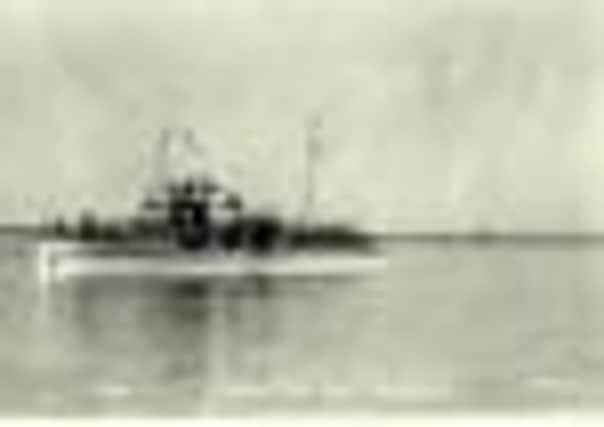DOWN MEMORY LANE: Bosham boat lost in evacuation


At the end of May and the beginning of June 1940, a quarter of a million Allied troops were brought back across the Channel from France in a flotilla of small ships in one of the most dramatic episodes of the second world war.
Sadly, that daring rescue also saw the demise of the largest vessel built at Bosham during the 20th century, which was lost to enemy fire off the beaches at La Panne.
HMS Hood


Advertisement
Hide AdAdvertisement
Hide AdJulian Wilson, a retired captain who now lives in Jersey, contacted Down Memory Lane to recall the ship.
He writes:
The 105ft long, 137-ton, twin-screw, beach excursion vessel New Prince of Wales, licensed to carry 400 passengers, was launched from Alec Fowler’s Mariners Boatyard, Shore Road, School Rithe, Bosham in June 1923, for my family’s business, the Southend Motor Navigation Co. Ltd.
Angela Bromley-Martin mentions the launching in her history, Bosham by the Sea, and even has a picture from the 1924 season which we do not have in our own family archives.


But that picture is a badly-reproduced one and she does not have all the relevant details correct – obviously when she wrote the text, she had no idea how to contact us to get all the facts right.
Advertisement
Hide AdAdvertisement
Hide AdThe pictures here show illustrations of the New Prince of Wales from souvenir postcards commissioned by our company to be sold to holidaymakers, and one of a miniature oil painting in our possession, which shows the NPoW returning from a ‘visit-on-board’ the battlecruiser HMS Hood, during a Navy Day in the 1930s.
Prince of Wales
When the Royal Navy requisitioned the New Prince of Wales on May 26, 1940, it was handed over to a very young officer who hadn’t even completed his training.
The Sheerness Small Vessels Pool, under Commodore AS Taylor, was scraping the bottom of the barrel for personnel with small-craft experience between May 26 and May 29.
This was before Their Lordships of the Admiralty, driven by Winston Churchill, changed their minds on May 30, and asked the BBC to appeal for owners of other small craft to take their own vessels to Dunkirk where, at the start of Operation Dynamo, the Navy had been requisitioning small craft almost at gunpoint even – when their experienced civilian crews volunteered to take the vessels across themselves.
Apprentice
Advertisement
Hide AdAdvertisement
Hide AdSub-Lieut Peter Bennett, RN, had an apprentice ERA (out of the RN’s Sheerness-based Artificers’ Training School) to run the twin Thorneycroft petrol/parafin engines.
In the middle of April, 1940, they had just passed the mandatory Board of Trade Annual Inspection after the usual overhaul the previous winter, to have a renewed ‘B.o.T. Steam 6 Passenger Carrying Certificate’ for the next season, i.e. the summer of 1940.
In the Great War, Britain was never under threat of invasion and most of the seaside resorts did ‘business more-or-less as usual’ so nobody really thought there would be an invasion threat that would close down all the seaside resorts in the summer of 1940, for the rest of the war!
This engineering apprentice was a youngster who, because he was only halfway through his training, was so woefully ignorant of the machinery he was placed in charge of that he allowed the fuel tanks to be topped-off with diesel at Sheerness Dockyard, leading to constant engine stoppages from fuel contamination throughout the voyage.
Advertisement
Hide AdAdvertisement
Hide AdSub-Lieut PHE Bennett survived the war with the rank of Lieut-Cdr, RN, entered the church ministry and became the vicar of Goring By Sea.
In the summer of 1984, I exchanged letters with him about the last voyage of the New Prince of Wales, and he was very forthcoming on the details, and her sinking in the shallow waters somewhere off the beaches between Bray-Dunes and La Panne.
He also gifted me with some relevant ephemera, RN documentation, which I have stored in our family archives.
Sunk
I was glad to have the details of how our fleet flagship was sunk, for our family history, because at no time during WWII did the Admiralty and the Ministry of Shipping give the owners any details of the losses of any of our small fleet of beach excursion vessels during Operation Dynamo.
Advertisement
Hide AdAdvertisement
Hide AdWe – the Southend Motor Navigation Co Ltd – offered to the RN OIC Small Vessels at Sheerness our whole fleet of seven shallow-draft motor boats for Operation Dynamo, with their crews who were refused permission to take their own vessels across, despite being ex-RN.
My father and his partner only employed ex-RN personnel, to get a commonality of previous seamanship training, and experienced watermen, too.
In late 1945, we got just one handed back and we were never told the precise fates of the other six!
Get in touch
Have you got memories or photographs you would like to see featured on our Down Memory Lane page?
You can email us on [email protected].